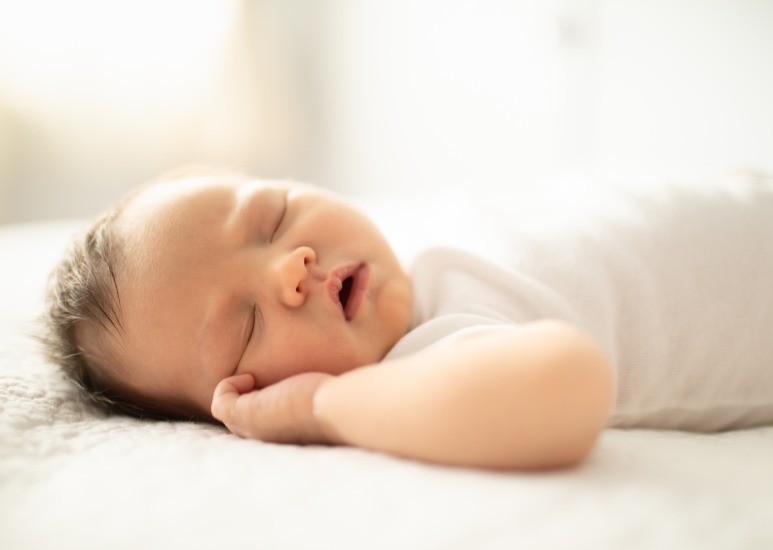Most parents hear different things about what's best for their baby when putting them to bed. Here in Indiana, there have been a lot of public safety announcements regarding safe sleeping tips to reduce the incidence of SUID (Sudden Unexpected Infant Death).
SUID is defined as the death of an infant less than one year of age, without an identifiable cause of death before investigation. Although the SUID rate has dropped significantly in the U.S., thanks to PSAs, it still affects around 3,600 babies a year. In fact, Indiana ranks as one of the highest states for infant mortality - a tragedy that can often be prevented. SUID is obviously devastating to a family; however, there are things you can do to help protect your little one.
Regional Director of the Perinatal Center at Community, Martha Allen, MSN, RN, shares these fantastic tips. When putting your baby to bed, follow these simple guidelines.
Always remember your A, B, C’s!
Alone
It can be tempting to give your little bundle a nice, cozy blanket or a soft bear to snuggle with. Be sure to have nothing in the crib with your infant. This includes pacifiers, bumpers, blankets, stuffed animals and pillows. Make sure to use a firm mattress with a tight fitted sheet that will not come loose. You may use a sleep sack only if it is wearable and will not tangle or trap the infant. Swaddling is no longer an acceptable method for safe sleep, simply because a baby can wiggle out of the swaddle and suffocate.
Putting your baby to bed alone is the number one thing to remember for a child’s safety while sleeping.
Back
Always put your baby on its back to sleep. As a rule of thumb, nap time and bedtime are back time. This has changed quite a bit over the years. Laying an infant in bed on its back is the new best practice established by the American Academy of Pediatrics. Through studies and analyzing sleep accidents, they’ve found that there is a lesser chance of choking because of how a baby's esophagus is shaped. If your baby rolls over while sleeping, that is fine. As long as it starts on its back, baby can stay flipped if able to flip back again on his or her own.
Crib
Put your baby to sleep in a crib. This can be a Pack n’ Play, bassinet or a standard crib. It needs to be a firm surface with a tight fitted sheet that will not come loose. You can still keep your little one close! It is encouraged to have your baby sleep in the same room with you for the first year of life in order to lower the risk of SUID. However, babies should not sleep in bed with their parents. Your infant needs to be in its own sleep area.
Additional Tips for Safe Sleep
Do not overheat your baby. As a rule of thumb, dress your infant only slightly warmer than you would yourself, without needing extra cover. This is something many parents or caregivers tend to overthink. If you need a sweater, give your baby sleeves. When putting your infant to bed you can always dress it in sleeves for warmth, but keep a fan on. This helps baby remain comfortable.
Follow the ABC’s throughout baby's first year. After year one, babies can comfort themselves.
Lastly, make sure that your partner and other caregivers are on the same page regarding these safe sleeping tips. Although you may be aware, other caregivers may not. This includes visits with grandparents, older siblings and babysitters.
You have a lifetime of joys ahead. If you have additional questions or are looking for a pediatrician, talk to a Community pediatrician today.
